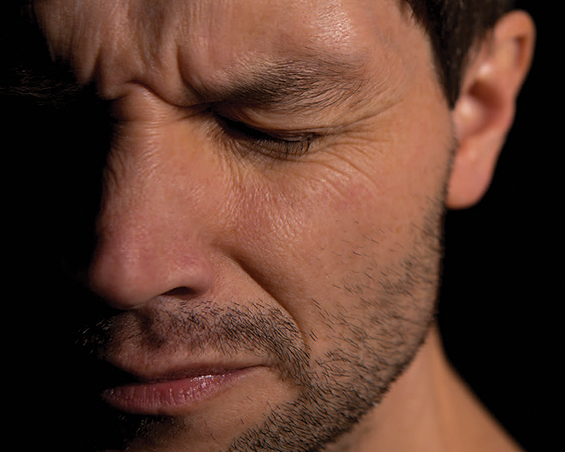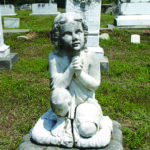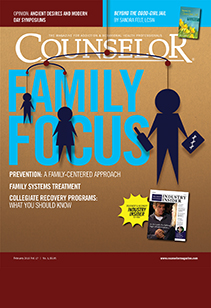Much has been written about recovery-oriented systems of care in African American communities (Sanders, 2013; Sanders, Sanders, & White, 2006) and American Indian communities (Coyhis & White, 2002; Coyhis, 1990; Coyhis, 2000), but little has been written about recovery-oriented systems of care in Hispanic/Latino communities.
This article focuses on the partnerships between therapists and recovery coaches in facilitating addiction recovery in Hispanic/Latino communities through recovery-oriented systems of care. One author has provided therapy in Hispanic/Latino communities for many years and the other is one of the first recovery coaches to work with the Hispanic/Latino communities in Chicago. The article describes their work in two Hispanic/Latino communities in Chicago, specifically Pilsen and Humboldt Park. Emphasis will be placed upon the partnership between addiction therapists and recovery coaches in promoting addiction recovery. It is the hope of the authors that other communities move towards shifting addiction services in Hispanic/Latino communities from an acute care model towards recovery-oriented systems of care.
Recovery-Oriented Systems of Care
Recovery-oriented systems of care involves a collaboration between traditional treatment providers, consumers of care, and indigenous healers within communities—monks, medicine men, persons in recovery, rabbis, and others—compared to traditional addiction treatment, which does not include this as a general rule. A recovery-oriented system of care is often longer term and anchors recovery in the natural environment where clients live. The great majority of clients with substance use disorders (SUDs) who relapse do so within the first ninety days of discharge from traditional treatment. As a micro strategy, recovery-oriented systems of care often rely upon recovery coaches to provide ongoing recovery support in the client’s natural environment—sort of a “treatment without walls.”
The Two Communities
The two communities served by the coauthors in Chicago include Pilsen and Humboldt Park.
Pilsen
Pilsen, located three miles southwest of downtown Chicago, was inhabited by European immigrants from Germany, Ireland, and Poland in the nineteenth century. By the 1960s the majority of residents of Pilsen were Mexican American and by 1980, 95 percent of the residents of Pilsen were Mexican, 40 percent of whom migrated directly from Mexico (Arredondo & Vaillant, 2005).
Community strengths and protective factors for substance use in Pilsen include extended family orientation and culture, including language and celebrations like Cinco de Mayo, Day of the Dead, and the Mexican Day Parade. Sources of cultural pride include the Mexican American Museum and Benito Juarez High School. Other protective factors include a strong work ethic and many community businesses like bakeries, restaurants, clothing stores, grocery stores, and others.
Risk factors for SUDs within Pilsen include the presence of neighborhood gangs, community violence, poverty, poorly performing schools, and easy access to drugs. At the time of this writing drug cartel leader Joaquin “El Chapo” Guzman, who was recently rearrested, has a direct drug route from Mexico to Chicago’s Pilsen community.
Humboldt Park
Located on Chicago’s northwest side, the Humboldt Park community was named after Alexander Von Humboldt, a German geographer (1769–1859). In the beginning Humboldt Park was home to European immigrants for nearly 170 years and by 1980 Puerto Ricans became the largest ethnic group within the community (Pérez, 2005).
Strengths and community protective factors against SUDs within Humboldt Park include cultural pride, with the annual Puerto Rican Day Parade, Roberto Clemente High School (named in honor of The National Baseball Hall of Fame baseball player), the Puerto Rican History Museum, and a fifty-foot-tall sculpture of the Puerto Rican flag, which serves as a source of community identity and pride. Other protective factors include the maintenance of cultural practices including language, dance, strong family ties, and community organizations like The Greater Humboldt Park Neighborhood Association, United Blocks of West Humboldt Park, and the Greater Humboldt Park Community Wellness, a group that focuses on improving the quality of health for its residents.
Risk factors for substance use disorders for residents of Humboldt Park include gentrification leading to cross-cultural tension and displacement, poorly performing schools, gangs, easy access to weapons and drugs, community violence, police brutality, and high unemployment and poverty, with one third of the residents of Humboldt Park living below the poverty line and a 17 percent unemployment rate (“Census data,” 2012).
Role Clarity
To avoid role confusion it is important to delineate the differences in roles between a Twelve Step sponsor, a recovery coach, and an addition counselor (White, 2006). The primary similarities between a recovery coach and Twelve Step sponsor includes their own recovery is a primary credential rather than formal education; they both self-disclose, instilling hope based upon their own journey that recovery is possible; and they both maintain contact with persons seeking recovery in the natural environment.
Primary differences between a recovery coach and a Twelve Step sponsor include that sponsorship is provided through a voluntary organization such as AA, NA, and CA, while the recovery coach is often a paid member of an organization; sponsorship can occur in isolation, while the recovery coach is often a part of a multidisciplinary team; and the Twelve Step sponsor usually has to honor one pathway of recovery (i.e., the Twelve Step route), while the recovery coach has to honor multiple pathways of recovery ranging from harm reduction, medication-assisted therapy, faith-based, cultural, and other styles of recovery (White, Kurtz, & Sanders, 2006). The recovery coach links persons seeking recovery to needed resources in the community to promote recovery.
The primary differences between a recovery coach and addictions therapist are many (White, 2006). The role of recovery coach differs from the role of the therapist in different forms.
Self-Disclosure
Generally, recovery coaches self-disclose more than therapists, as their stories are proof that recovery is possible.
Different Competencies
Therapists need knowledge of:
- Evidence-based practices in the treatment of addiction
- How to do an assessment
- Treatment planning
- How to make a diagnosis
- Co-occurring disorders
- The integration of addiction and trauma treatment
- Family therapy
- Crisis intervention
- How to address suicide
- Domestic violence
- How to make referrals to mutual aid groups
- How to partner with recovery coaches
Recovery coaches need knowledge of:
- Advocacy
- Resources available in community to support recovery
- How to develop resources in the community to support recovery
- Knowledge of long-term recovery
- Awareness of roadblocks to recovery that exist in clients’ natural environments
- How to engage clients in their natural environments
- Indigenous healers present in the communities
- The limitations of their knowledge
- What to do if clients are in crisis
- How to partner with the treatment community
- How to provide various types of recovery support
Duration of Contact
By providing pretreatment, in-treatment, and posttreatment recovery support, the recovery coach generally has a longer-term contact with clients than the therapist.
Location
Recovery coaches are more likely to meet with individuals in recovery in the community. Therapists are more likely to provide office-based services.
Acute Care vs. Long-Term
Therapists traditionally provide help with acute care, and recovery coaches provide support for long-term recovery.
Addiction therapists spend a great deal of time helping clients with trauma caused by community violence; abandonment issues due to parental alcoholism; family reunification; and co-occurring disorders treatment, incorporating aspects of culture into treatment planning.
It is important for addiction therapists and recovery coaches to meet regularly to discuss their partnership in supporting recovery. Addiction therapists and recovery coaches must clarify role confusion, areas in which they overlap, and boundaries.
Insight from Jose
As a recovery coach 75 percent of the time I function as a resource broker. Most of my resources are stored in my cell phone. Without resources, many of the Hispanic clients I coach would relapse. I link people seeking recovery to English translators; English as a Second Language (ESL) classes; AA meetings in Spanish (AA LA Barca) and other mutual aid groups that provide recovery support including Latino Unidos (Latin United), Renacimento (Born Again), and Wicker Park club; budget counseling; and referrals to organizations that promote spiritual recovery. I also help people in recovery with secure state identification, voter registration, and necessities including food, clothing, shelter, and access to medical care with bilingual staff. We also celebrate their recovery annually.
Two of the groups that I have been providing recovery support services for recently includes gang members and undocumented immigrants seeking recovery. For gang-affiliated people seeking recovery, I assist with gang tattoo removal, help them brainstorm strategies to leave the gang, provide referrals for job training programs, and escort them to Twelve Step group meetings in safe territories. With people seeking recovery who are undocumented the recovery coaching focuses on referrals for housing and medical care, which is often a challenge to locate because of undocumented status. I also help them to develop educational recovery capital by referrals to GED programs where there are options to receive education in English or Spanish.
Another important part of my work is helping with recovery and relapse prevention. Two tools I use in helping with recovery and relapse prevention are the Relapse Prevention Counseling Workbook by Terence Gorski and Arthur Trundy (2000) and Anger Management for Substance Abuse and Mental Health Clients by SAMSHA (2012), both of which have been translated to Spanish.
Recommendations for Therapists
Micro-Aggressions
When doing cross-cultural counseling with Hispanic/Latino clients, be aware of the impact of micro-aggressions on the clinical relationship and have strategies to discuss their impact. Micro-aggressions can be defined as conscious or unconscious slights or insults which threaten to undermine the therapeutic relationship.
For example, say an addiction counselor sees a Mexican American mother who wears hospital scrubs to the first session, as she is headed to work after the session. He asks, “Are you a nurse?” to which she replies, “No, I’m a surgeon.” Her internal experience might be, “The therapist assumes I am incapable of being a doctor.”
Another example is a therapist who sees a Puerto Rican male client referred to therapy after testing positive for marijuana use. She asks the client, “Where are you from?” to which he replies, “Chicago.” This client’s internal experience may be, “Too many people, including this therapist, assume I’m a foreigner.”
Finally, another example is of a therapist speaking to a Cuban American adolescent. The therapist says, “You speak English well.” The client, looking surprised, may have an internal experience that says, “You view me as an outsider and do not expect me to be smart or speak clearly.”
Research indicated that micro-aggressions, if unaddressed, can lead to premature termination from counseling (Sue & Sue, 2012). To guard against this it is recommended that addiction counselors do three things early in therapy with Hispanic/Latino clients:
- Establish a strong therapeutic alliance so that clients are more likely to give the benefit of the doubt and not assume intentional harm when micro-aggressions occur.
- Pay attention to body language and facial expressions during conversations to gauge how some words impact clients.
- Let clients know that periodically they will be asked for feedback about how some words are affecting them.
Let Them Teach You
Allow clients to be the teachers about their culture. This establishes an egalitarian relationship. Therapists are the experts on addiction recovery, and clients are the experts on their experiences and culture.
Discuss Differences
Therapists should be willing to have a discussion of differences if these differences are barriers to trust in the counseling relationship.
Cultural Considerations
Therapists should also be willing to incorporate aspects of clients’ culture into recovery planning. This can occur by asking clients “How is this challenge dealt with in your culture?” or “From your cultural perspective, how do you know when this challenge has been resolved?”
Indigenous Healers
Therapists should work with indigenous healers in facilitating recovery. These are individuals sanctioned within cultures to heal illness.
In seminars we often ask participants, “When you had a common cold as a child, how did adults take care of you? What was the cultural origin of the method used? Did it work?” With this discussion we quickly learn that there are numerous ways to heal the common cold, which leads to a discussion on all the ways to address addiction, including the use of indigenous healers. In Mexican culture, curanderismo is the practice of folk medicine using herbs and spiritual practices to treat physical and spiritual illnesses.
Examples of curanderismo includes yerberolas (herbalists), who utilize herbs used to treat stomach ailments, intestinal problems, arthritis, HIV, cancer, and drug withdrawal (Tafur, Crowe, & Torres, 2009). Another example is sobadorolas, who specialize in therapeutic message.
Within Puerto Rican culture, espiritismo is a traditional, spiritual healing practice. Espiritismos are often sought out to address emotional and mental health challenges (Fernandez, 2001).
Involve the Family
Therapists should work with the entire family, as with many Hispanic/Latino communities the extended family is the primary unit. In addition to being culturally appropriate, family involvement can increase recovery rates.
Recommendations for Implementing Recovery Coaching Programs in Hispanic/Latino Communities
Firstly, provide training to staff on the differences between the acute care model of addiction treatment and a recovery-oriented system of care. It is important to highlight how the role of the recovery coach differs from that of an addiction counselor. Emphasis in the training should be placed upon the development of cultural competence when serving Hispanic/Latino communities, including intercultural differences and cross-cultural counseling.
Secondly, make sure the organization’s leadership is also trained and behind the paradigm shift.
Thirdly, recruit recovery coaches from within the community. Jose mentions this in his own experiences:
If you are a recovery coach in Humboldt Park, your previous gang affiliation or drug use followed by recovery can be a real asset. Many of my clients are attempting to leave street gangs and distance themselves from drug-using peer groups. If you have been there before, you can guide them. If the recovery coach is bilingual that is also a plus. Some people seeking recovery prefer to speak Spanish, others English, and some go back and forth between Spanish and English.
Additionally, stress the importance of self-care for recovery coaches. According to Jose, “If you are from the culture it is easy to see your job as a mission. If you happen to live in the community you can run into people you coach while you are at lunch, on breaks or at church. This can facilitate burnout. I make sure to get my alone and quiet time and practice acts of self-care. It is also important to separate your personal recovery from recovery coaching.”
And finally, start slow. It is difficult to abruptly shift from the acute care model towards a recovery-oriented system of care. Such change can shock a system, leading to feelings of incompetence, grief (missing the old approach), yearning (for the old approach), and apathy. A recommended approach is to start with one recovery coach providing ongoing recovery support to a small group of people seeking recovery, then gradually grow the program. A few small steps to implementation is to create or have an updated directory of bilingual services on site and available. If at all possible, be culturally sensitive to participants’ food and sacred holidays.
Summary
Hispanic/Latino communities are the fastest growing communities in the United States. It is important for the organizations who serve the Hispanic/Latino community to move beyond the acute care model of addiction towards a recovery-oriented system of care, incorporate culture into the recovery planning process, and use indigenous healers who partner with therapists to anchor recovery in the natural environment.
References
Arredondo, G. F., & Vaillant, D. (2005). Mexicans. Retrieved from http://www.encyclopedia.chicagohistory.org/pages/824.html
“Census data – Selected socioeconomic indicators in Chicago, 2008–2012.” (2012). Retrieved from https://data.cityofchicago.org/Health-Human-Services/Census-Data-Selected-socioeconomic-indicators-in-C/kn9c-c2s2
Coyhis, D. (2000). Culturally specific addiction recovery for Native Americans. In J. Kreseton (Ed.), Bridges to recovery (pp. 77–114). New York, NY: The Free Press.
Coyhis, D. (1990). Recovery from the heart: A journey through the Twelve Steps. Center City, MN: Hazelden.
Coyhis, D., & White, W. L. (2002). Addiction recovery in native America: Lost history, enduring lessons. Counselor, 3(5), 16–20.
Fernandez, M. (2001). Community healing among Puerto Ricans: Espiritismo as a therapy for the soul. In M. F. Olmo (Ed.), Healing cultures: Art and religion as curative practices in the Caribbean and its diaspora. New York, NY: MacMillan.
Gorski, T. T., & Trundy, A. B. (2000). Relapse prevention counseling workbook: Practical exercises for managing high-risk situations. Independence, MO: Herald Publishing House.
Pérez, G. M. (2005). Puerto Ricans. Retrieved from http://www.encyclopedia.chicagohistory.org/pages/1027.html
Sanders, M. (Ed.). (2013). Substance use disorders in African American communities: Prevention, treatment, and recovery. New York, NY: Routledge.
Sanders, T., & Sanders, M., & White, W. L. (2006). “When I get low, I get high”: The portrayal of addiction and recovery in African American music. Counselor, 7(6), 30–5.
Substance Abuse and Mental Health Services Administration (SAMHSA). (2012). Anger management for substance abuse and mental health clients. Retrieved from http://store.samhsa.gov/shin/content//SMA12-4210/SMA12-4210.pdf
Sue, D. W., & Sue, D. (2012). Counseling the culturally diverse: Theory and practice (6th ed.). Hoboken, NJ: Wiley & Sons.
Tafur, M. M., Crowe, T. K., & Torres, E. (2009). A review of curanderismo and healing practices among Mexicans and Mexican Americans. Occupational Therapy International, 16(1), 82–8.
White, W. L., Kurtz, E., Sanders, M. (2006). Recovery management. Retrieved from http://www.nattc.org/recoveryresourc/docs/RecMgmt.pdf
White, W. L., & Sanders, M. (2002). Addiction and recovery among African Americans before 1900. Counselor, 3(6), 64–6.
White, W. L. (2006). Sponsor, recovery coach, addiction counselor: The importance of role clarity and role integrity. Retrieved from https://www.oasas.ny.gov/recovery/documents/WhiteSponsorEssay06.pdf














 Counselor Magazine is the official publication of the California Association of Addiction Programs and Professionals (CCAPP). Counselor offers online continuing education, article archives, subscription deals, and article submission guidelines. It has been serving the addiction field for more than thirty years.
Counselor Magazine is the official publication of the California Association of Addiction Programs and Professionals (CCAPP). Counselor offers online continuing education, article archives, subscription deals, and article submission guidelines. It has been serving the addiction field for more than thirty years.